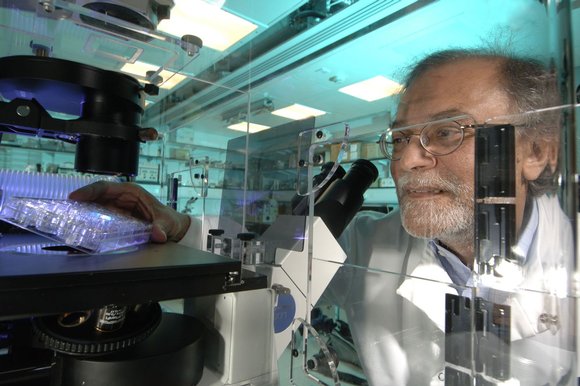Two-dad babies on the horizon?
The controversial three-parent IVF procedure was legally approved in the UK earlier this year, but an even more revolutionary stem-cell based technique for engineering egg cells using skin from two adults of the same sex has just been achieved, potentially paving the way for the first fully ‘manufactured’ baby.

The entire concept of human nature may be on the verge of a revolution. For virtually all of human history, procreation has required sexual intercourse between a male and a female. In the late twentieth century, in-vitro fertilization eliminated the necessity of physical interaction, providing possibilities of donor-based reproduction and genetic manipulation. Now, however, the essential dualism of male-female, so long fundamental in our understanding of life, nature and humanity, may be challenged by a groundbreaking technological intervention, which is able to ‘synthesize’ egg and sperm cells from adult skin cells, without ever introducing ‘male’ or ‘female’ DNA, thus allowing same-sex couples of both genders to conceive biological children.
The breakthrough was achieved by scientists at Cambridge University in cooperation with the Weizmann Institute of Science in Israel. Recently, they successfully produced early human stem-cells in laboratory conditions, using only skin cells – a procedure previously achieved with mice, but which, until now, has been uncharted territory in human biology and medicine.
Naturally, the technology remains in its infancy, but, already, its potential is sparking optimism as well as skepticism in different communities. The technology, if successfully developed and legalized, will first and foremost consist in a fertility treatment, allowing infertile male-female-couples to have biological children, whilst also potentially eliminating a range of genetic diseases from the parent DNA. For instance, men who have lost their fertility through cancer or cancer treatments may once again be fertile. Furthermore, and more controversially, this type of IVF will allow same-sex couples to have offspring produced entirely with their own genetic material. According to The Sunday Times, the breakthrough has already sparked interest from the gay community as well as infertile couples of any kind.
Even though the breakthrough is largely framed in a rhetoric of optimism, it brings with it a range of issues that will require a substantial amount of ethical and political consideration, in many cases even legislation changes. Most believe that the technology will not be fully fledged for another ten years, while others prophesize that the first baby will be produced in no more than two years. In any case, it is a massively revolutionary prospect that, as one of the head researchers puts it, “needs to be thought through”. Aside from the ethical and political implications, which, of course, include the slippery slope of “designer babies”, it is natural to think of it as a complete turnaround of human nature. On the other hand, as the head of the Danish Council of Ethics puts it, the revolutionary aspect may not be so revolutionary after all, as “we already live in a very unnatural world”. Indeed, the human life world has been transformed and revolutionized again and again over the past centuries and, obviously, not only in the biological sense. The transformative, industrialized modern and postmodern societies of humanity are far removed from the anchored and closed condition which many philosophers, including Hobbes and Rousseau, have called “the state of nature”, and indeed evolve in many directions, away from the core of “Natural Humanity”.
Whatever the case, the prospect of the dissolution of the male-female dichotomy inevitably touches on essential assumptions about life and humanity, and may, in the long run, indeed pave the way for a radical posthuman condition. Without taking the expectation entirely too far, one might also imagine changes to language and its essential semiotic functions. What would poetry, or indeed philosophy, for instance, look like once metaphors and analogies based on male-female-structures of meaning are eliminated?
Surely, if a technology such as this becomes widely accessible, or even, one day, the norm, one of the oldest and most powerful metaphors of language and thinking, may, literally, be castrated.
An interesting notion, no doubt.
Sources:
The Sunday Times, Feb 22: "Cell breakthrough to bring two-dad babies"
Medical Daily, Feb 24: "Stem Cell Breakthrough Opens Door For Two-Dad Babies In As Little As 2 Years"
Politiken (danish), Mar 18: "Forskningsgennembrud: To mænd vil kunne lave et barn"
